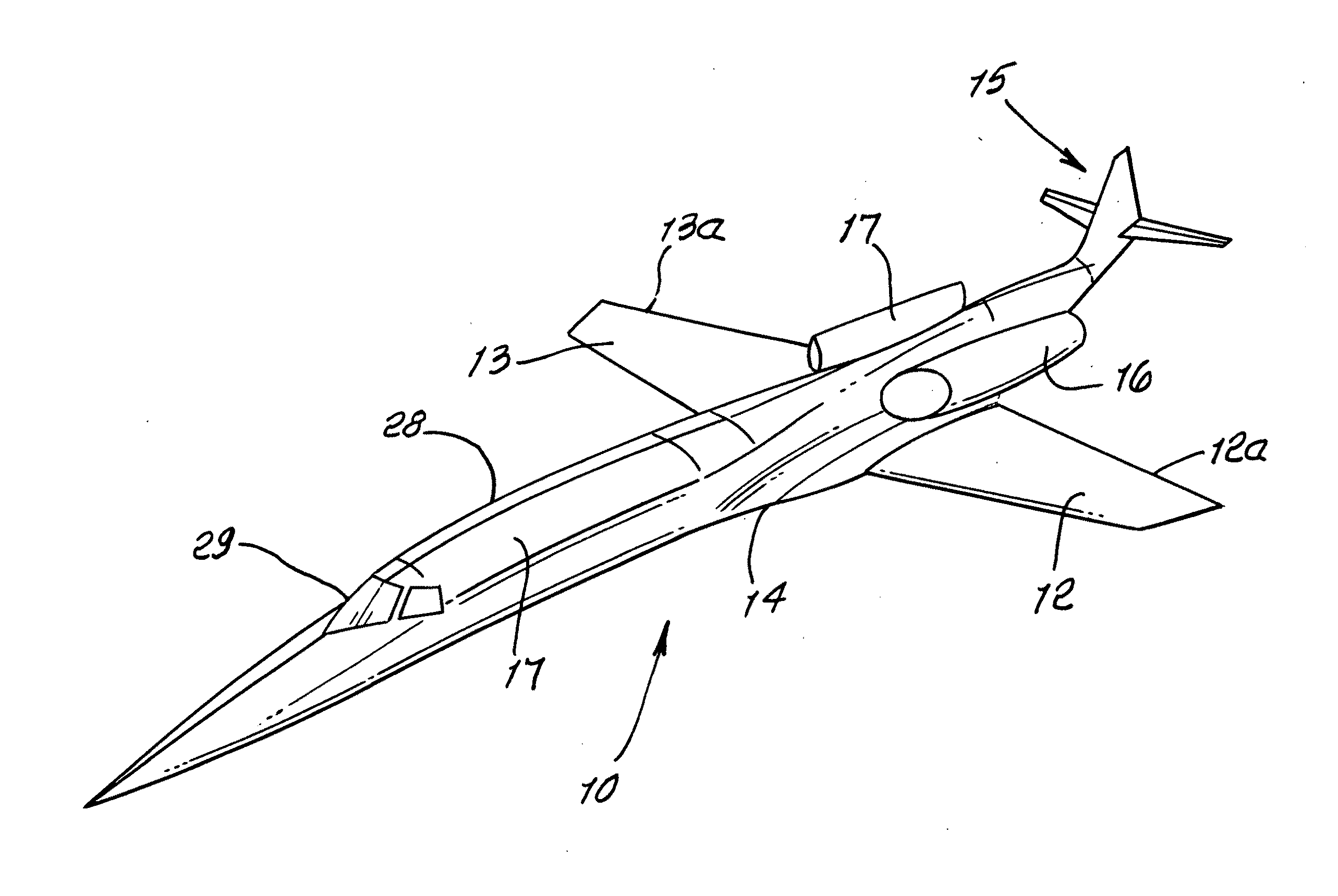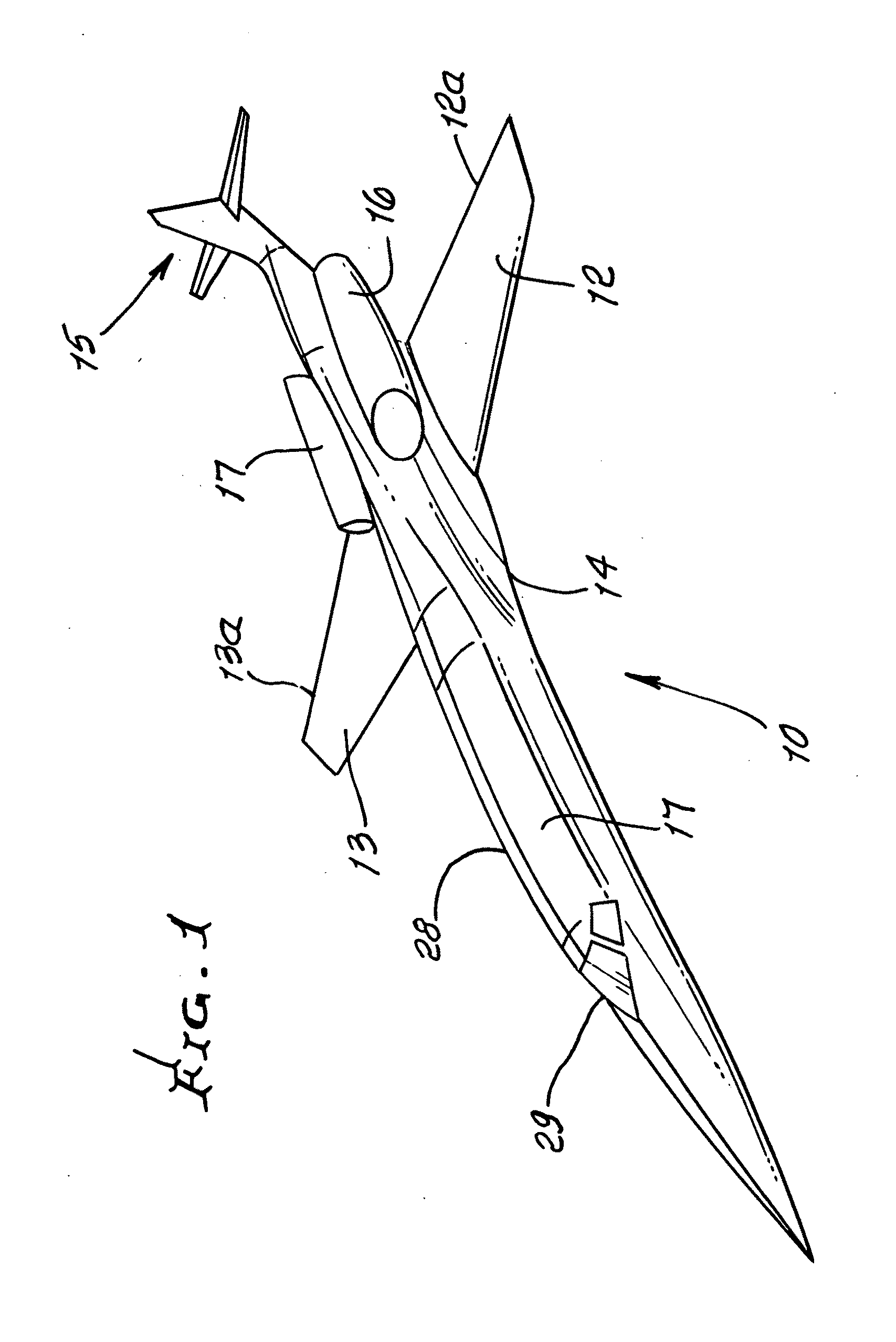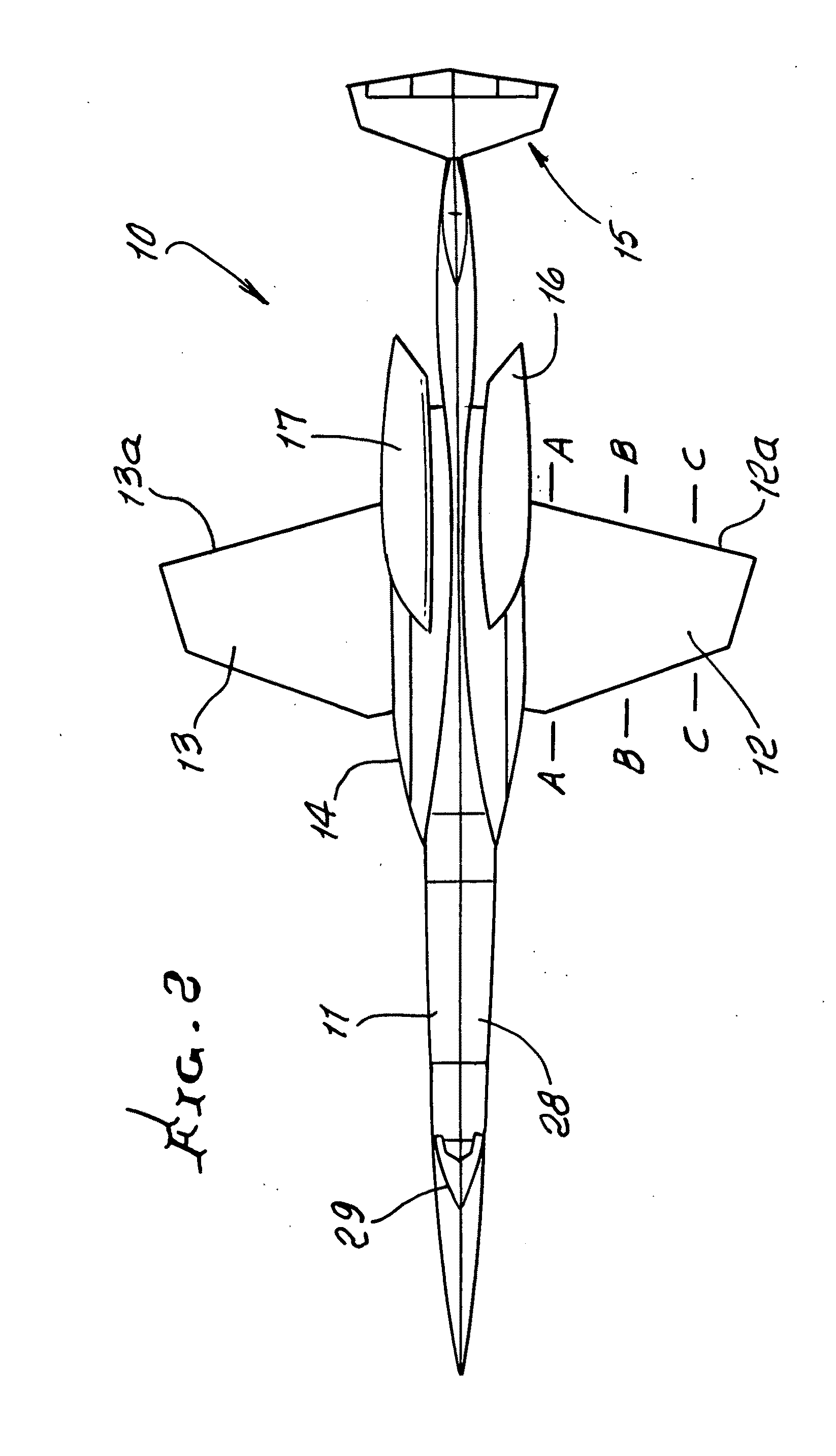Laminar flow wing optimized for supersonic cruise aircraft
a supersonic cruise aircraft and flow wing technology, applied in the direction of aircrafts, wing shapes, transportation and packaging, etc., can solve the problems of limited thickness-chord ratios (t/c) and wave drag appreciably, and achieve the effect of improving computational optimization techniques and variation over the span
- Summary
- Abstract
- Description
- Claims
- Application Information
AI Technical Summary
Benefits of technology
Problems solved by technology
Method used
Image
Examples
Embodiment Construction
[0026]In FIGS. 1 and 2, the supersonic aircraft 10, has a fuselage 11, wings 12 and 13, strake 14, and tail 15. Two engine nacelles 16 and 17 are located at opposite sides of the fuselage, and project rearwardly of the wing trailing edges 12a and 13a. A cabin and cockpit are shown at 28 and 29, respectively.
[0027]FIGS. 3a, 3b and 3c show wing biconvex surfaces 130 and 131, along the span. See also airfoil chord C and thickness dimension t as follows:
[0028]CA and tA, at A-A
[0029]CB and tB, at B-B
[0030]CC and tC, at C-C
[0031]FIG. 4 shows the wing-fuselage intersection region, in which the trailing edge line 13a intersection with the fuselage center line 30 is indicated at 31; and the wing has a leading edge 18, with projected edge line 18a intersection with the fuselage center line indicated at 19. Mach lines 20 and 21 projected from 19 and 31 respectively intersect at 22. A chord line 23 intersects 22, as shown. The wing extent 24 outboard of chord line 23 is considered to be outboar...
PUM
 Login to View More
Login to View More Abstract
Description
Claims
Application Information
 Login to View More
Login to View More - R&D
- Intellectual Property
- Life Sciences
- Materials
- Tech Scout
- Unparalleled Data Quality
- Higher Quality Content
- 60% Fewer Hallucinations
Browse by: Latest US Patents, China's latest patents, Technical Efficacy Thesaurus, Application Domain, Technology Topic, Popular Technical Reports.
© 2025 PatSnap. All rights reserved.Legal|Privacy policy|Modern Slavery Act Transparency Statement|Sitemap|About US| Contact US: help@patsnap.com



